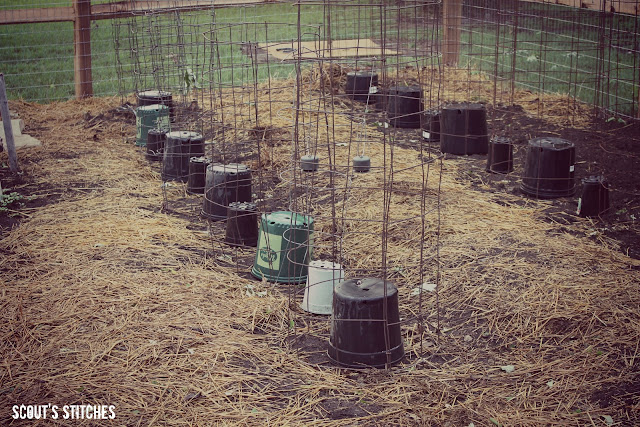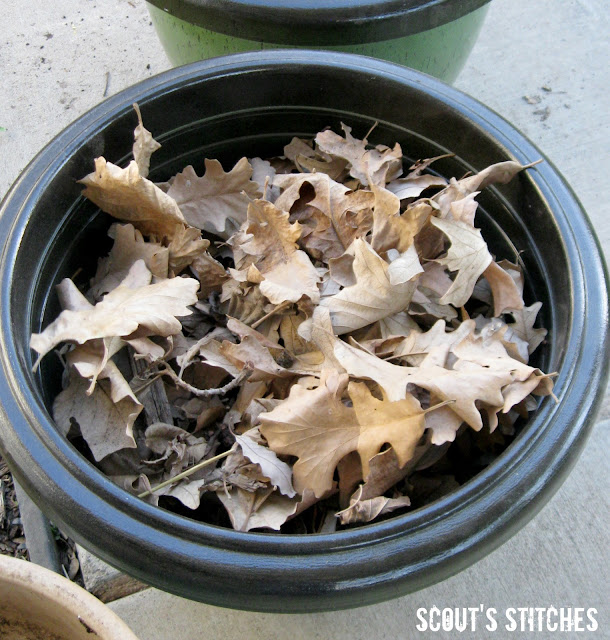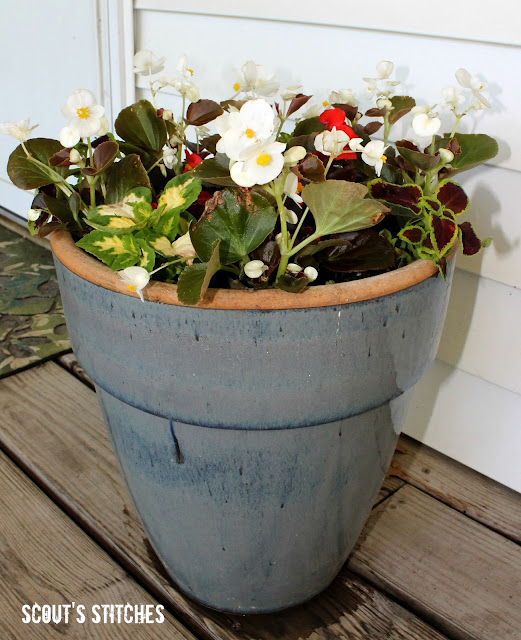Today is the last day of "How Does Your Garden Grow?". I hope you have found the posts so far informative. Today I am going to talk a little bit about protecting your plants once you get them in the garden. While sunshine, water and good soil are most important for helping your garden grow, plants do need some protection from outside threats.
Pests
Pests are one of the things that are difficult to keep away from your yummy new plants. Last year we had our biggest issue with deer. They ate all of our pepper plants and our beans. Talk about frustrating! So this year we had a plan. We built a 4 1/2 foot high fence out of cedar split rail. Then we put a welded wire fence on the inside of it to keep out the smaller critters. Then my husband put some natural deer deterrent around the perimeter of the garden. We haven't had problems with the deer jumping the fence so far, but if we do we may electrify the top portion of the fence.
Another pest problem are insects who like to eat on the leaves or fruit of plants. In the past years we have always used chemical pesticides, but this year we are trying to do more healthy options and switch to organic gardening. I have been doing a lot of research and found the website Organic Gardening pretty helpful. I am hopeful we will be able to control the pests with organic pesticides.
Cold and Weather
In the spring when your garden is just planted there is always the possibility of frost. We planted our tomatoes and peppers a little bit before the average frost date, just because my husband is a risk taker. There are a lot of different ways to protect your plants, but one of the easiest we have found is to save back the containers that your flowers, bushes and trees come in. They are already vented and are pretty easy to stack. This spring we have had to put them out once because of frost and once because a hail storm was coming. If you use these, make sure you take them off the next day before the sun heats them up and fries your plant!!
They do also sell water filled cloches in the store for tomatoes and row covers can be used as well.
I wish you all the best of luck this year with your gardening and hope this series has inspired you!
*******************************
Don't miss any of the other posts from the gardening series- thanks for joining me!
"How Does Your Garden Grow?" Part 1- Stretching Potting Soil
"How Does Your Garden Grow?" Part 2- Stevie from Garden Therapy- Starting Veggie Seeds
"How Does Your Garden Grow?" Part 3- What To Grow?
"How Does Your Garden Grow?" Part 4- Annie from MamaDweeb Raised Garden Beds Vs. In Plot Garden
"How Does Your Garden Grow?" Part 3- What To Grow?
"How Does Your Garden Grow?" Part 4- Annie from MamaDweeb Raised Garden Beds Vs. In Plot Garden





































